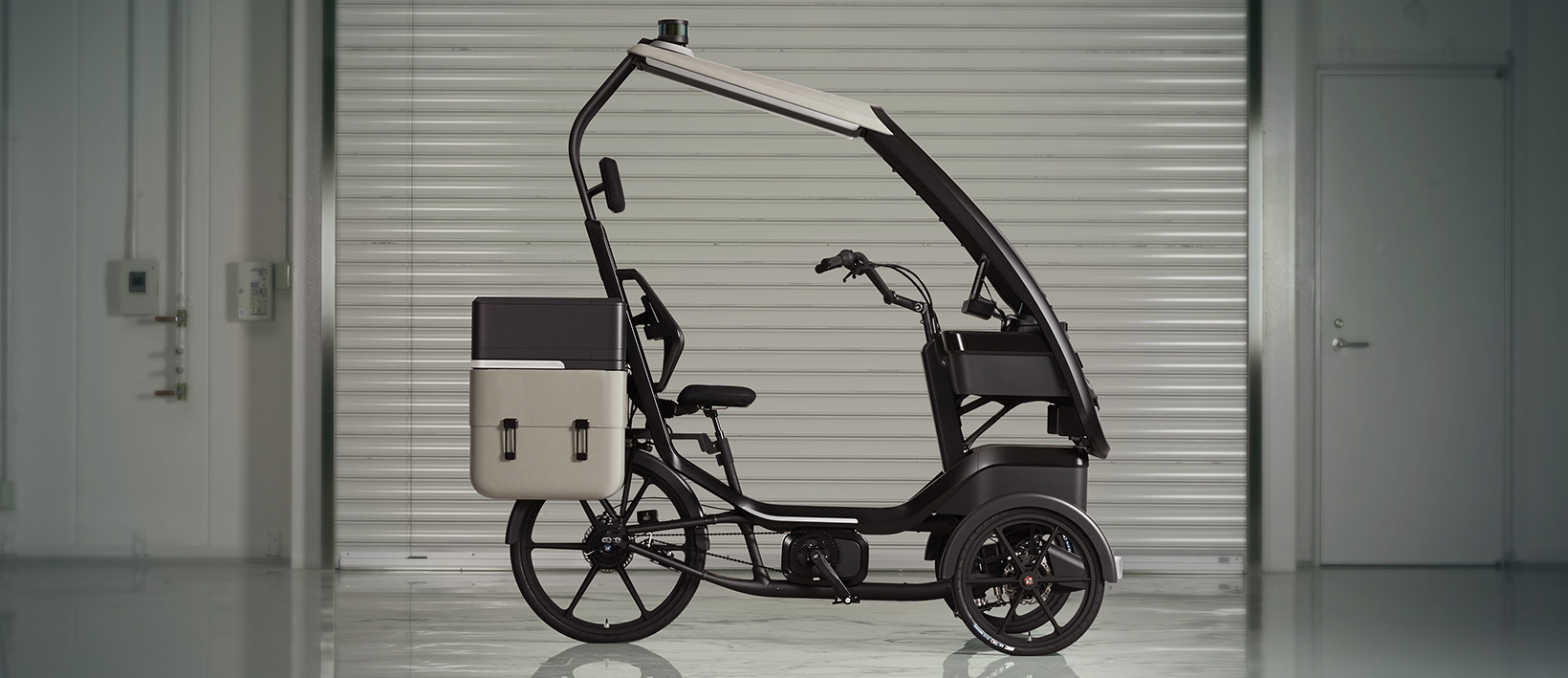

As you might have noticed, this version of the PEV (Persuasive Electric Vehicle) is the latest version that our team works on at the MIT Media Lab. This is a joint project between the MIT Media Lab and the Denso Corporation. This is not a render, it's an actual product now! Woo-hoo 🎉🎉🎉
As a sole product designer in this project. I work on human-machine interface (HMI) design, industrial design, hardware system, and user experience design for the product. Our team built this prototype at the MIT Media Lab (with Denso collaboration) in Dec. 2019.
Mechanical system design, industrial design, UX prototyping, machining, interaction design.
Rhinoceros, HTML, CSS, Javascript, ROS, Arduino, CNC machining, Laser Cut, Water jet, 3D printing.
Michael Lin, Phil Tinn, Justin Zhang, Jason Wang, Vincy Hsiao, Kai Chang, Luke Jiang, Yago Lizarribar, Bill Lin, Danny Chou.
Learn more from the Media Lab project website.
IDK stands for Interaction Development Kit. It is my Master’s thesis at the MIT Media Lab in 2019. Basically, IDK is a piece of hardware with all the necessary tools that a designer can use to prototype human-machine interfaces. It can be connect with the robot in a plug-and-play manner! I will update my publication here as soon as the Media Lab releases it, so please stay tuned!😉
The IDK introduces a new approach for designers and developers to designing interactions on micro-mobility systems; it provides a new tangible interface that embodies the concept of SDK and transports the concept from a virtual tool to a physical embodiment, facilitating the human-machine interface design and prototyping process.
I lead the HMI design of this project. The principle for PEV's HMIs is to design human-centric interactions. Our team believes that if the autonomous vehicle is coming to the urban areas, it should be the vehicle that learns how to interact with people, not the other way around.
Our team starts by researching the related HMI works, studying current driver-pedestrian communication patterns, and proposing design solutions to translate these experiences into HMIs that allow the vehicle to interact with humans. However, it is hard to describe hardware UX to the users without letting them experience the products. There- fore, we would quickly build low-fidelity prototypes and work backward to test them with users, making several iterations based on user's feedback.
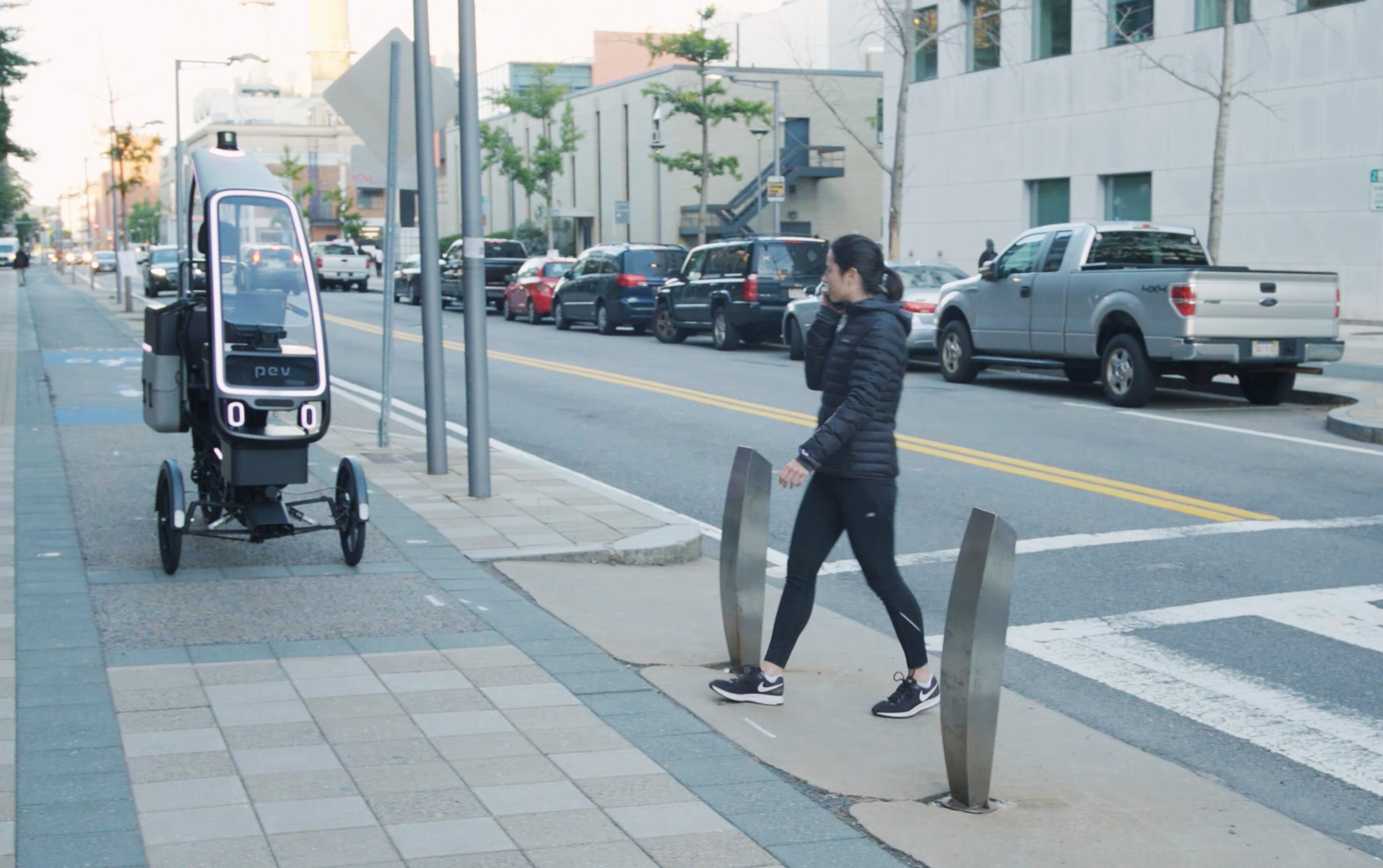
PEV Eyes
PEV’s headlights point toward the pedestrians and signal them it’s safe to pass by.
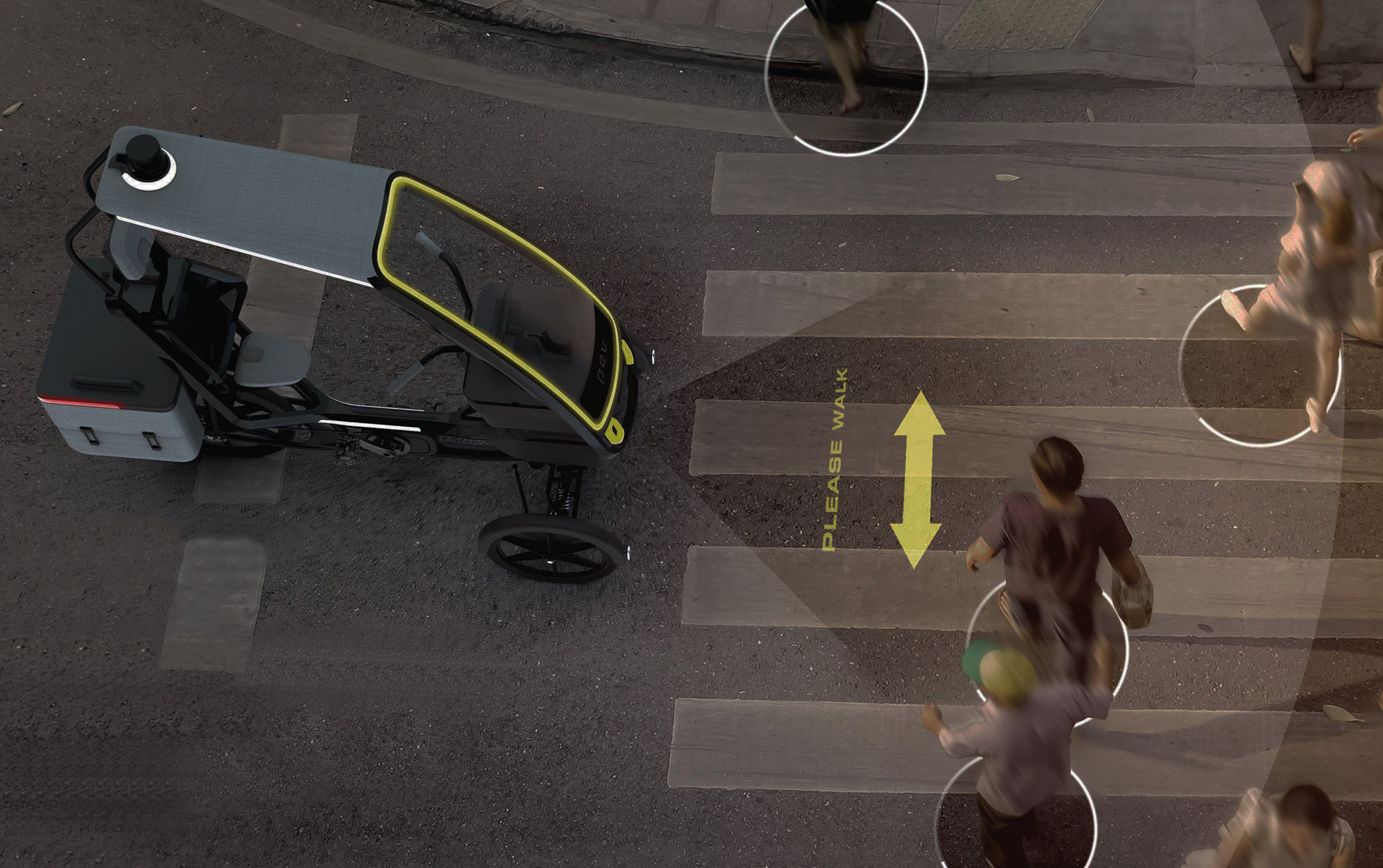
Projection interaction
At night, the PEV uses projection to signal the pedestrians that it is aware of the human presence and interacts with them.
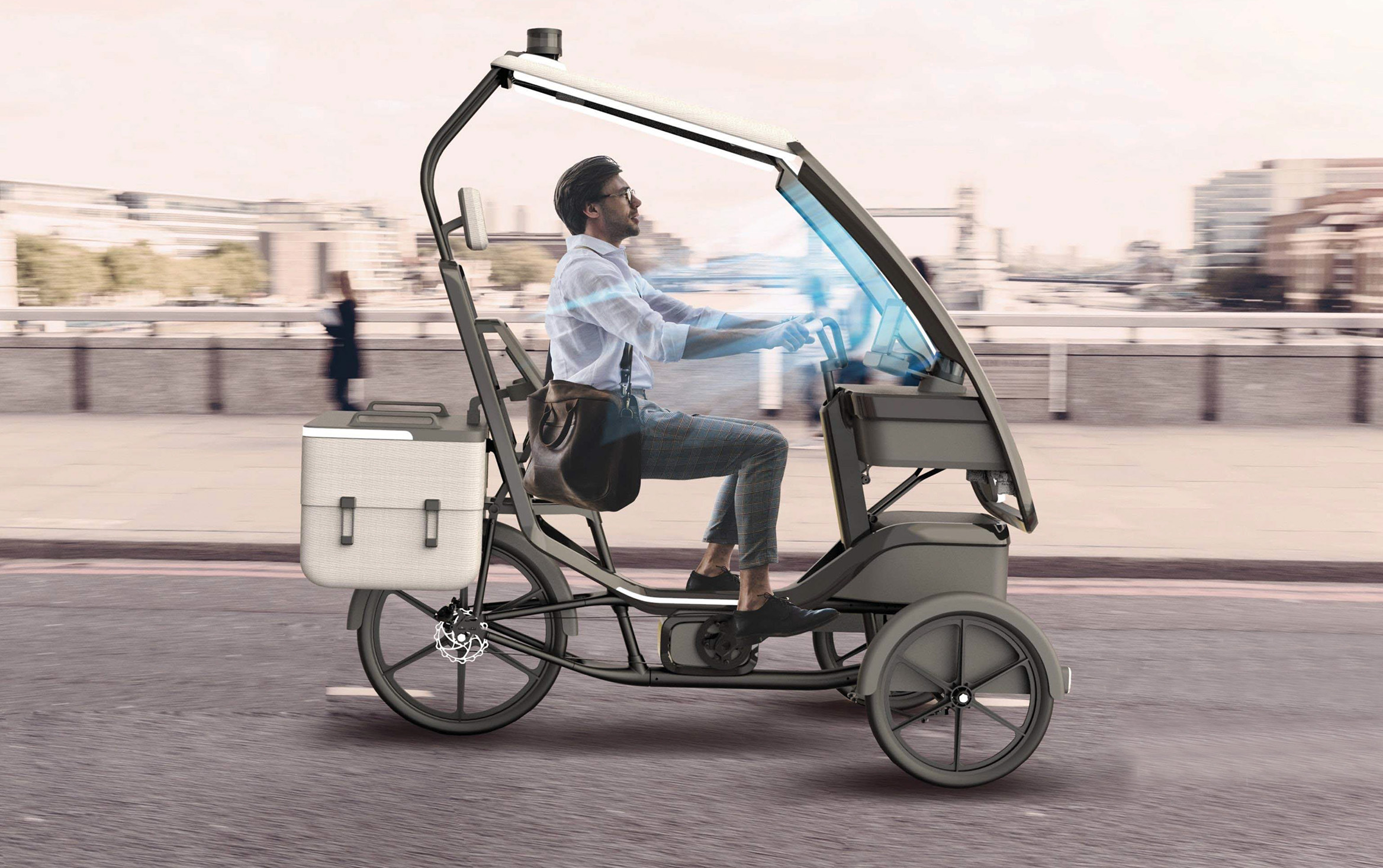
Air curtain
PEV’s headlights point toward the pedestrians and signal them it’s safe to pass by.
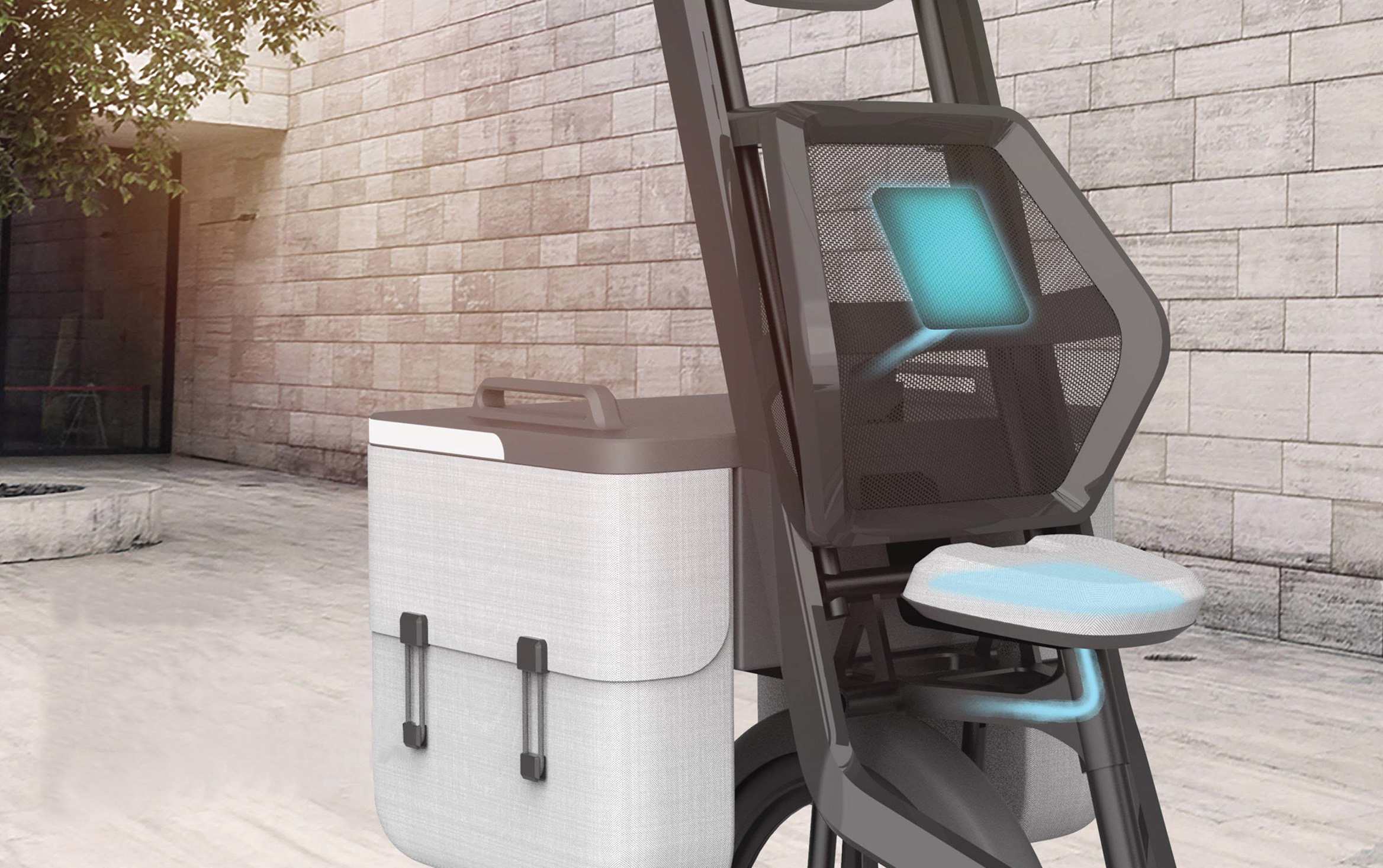
Thermal seating
The seat generates cool/warm air to provide comfort.
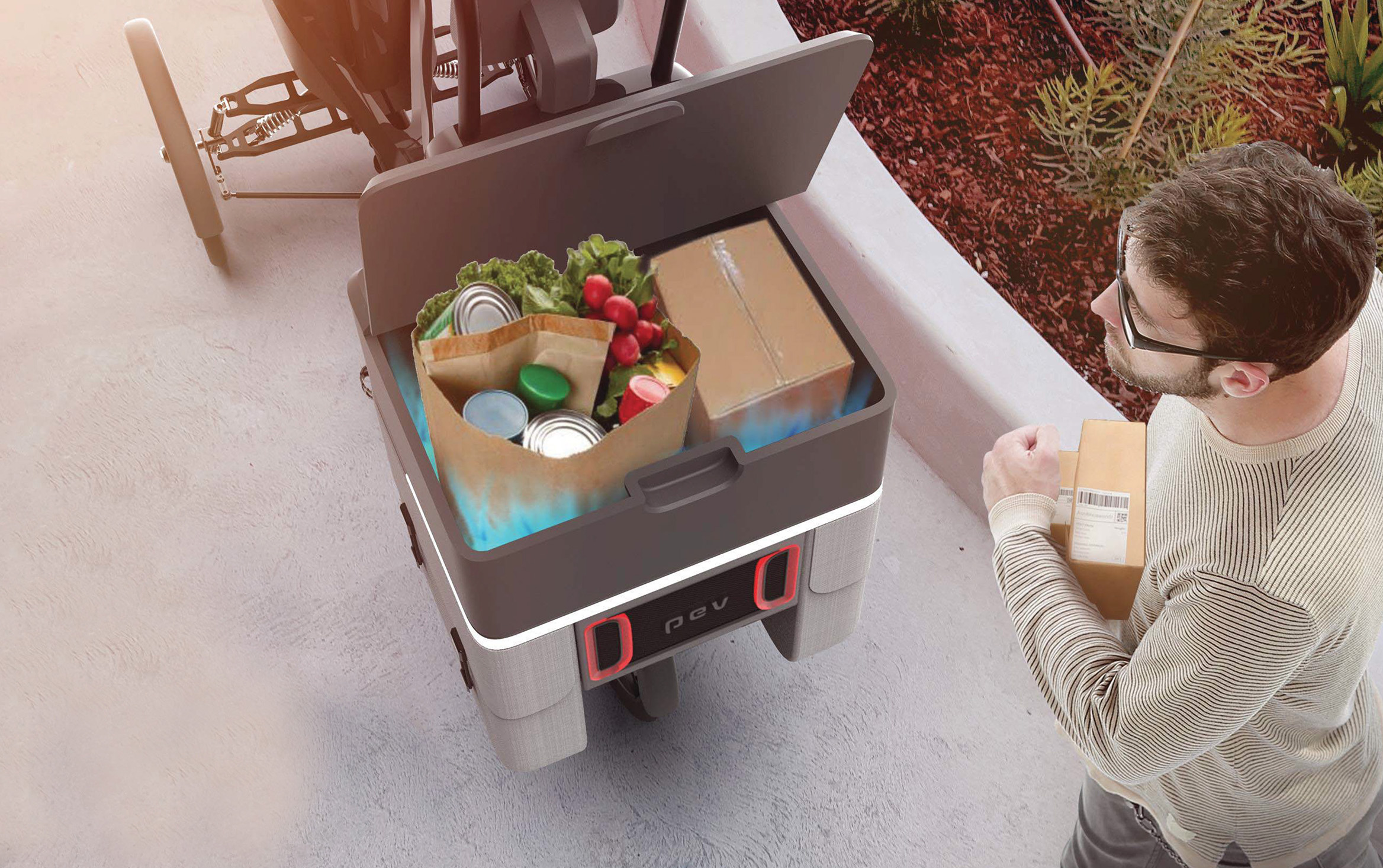
Thermal storage
PEV utilizes the HVAC system to keep the storage cool for package delivery.
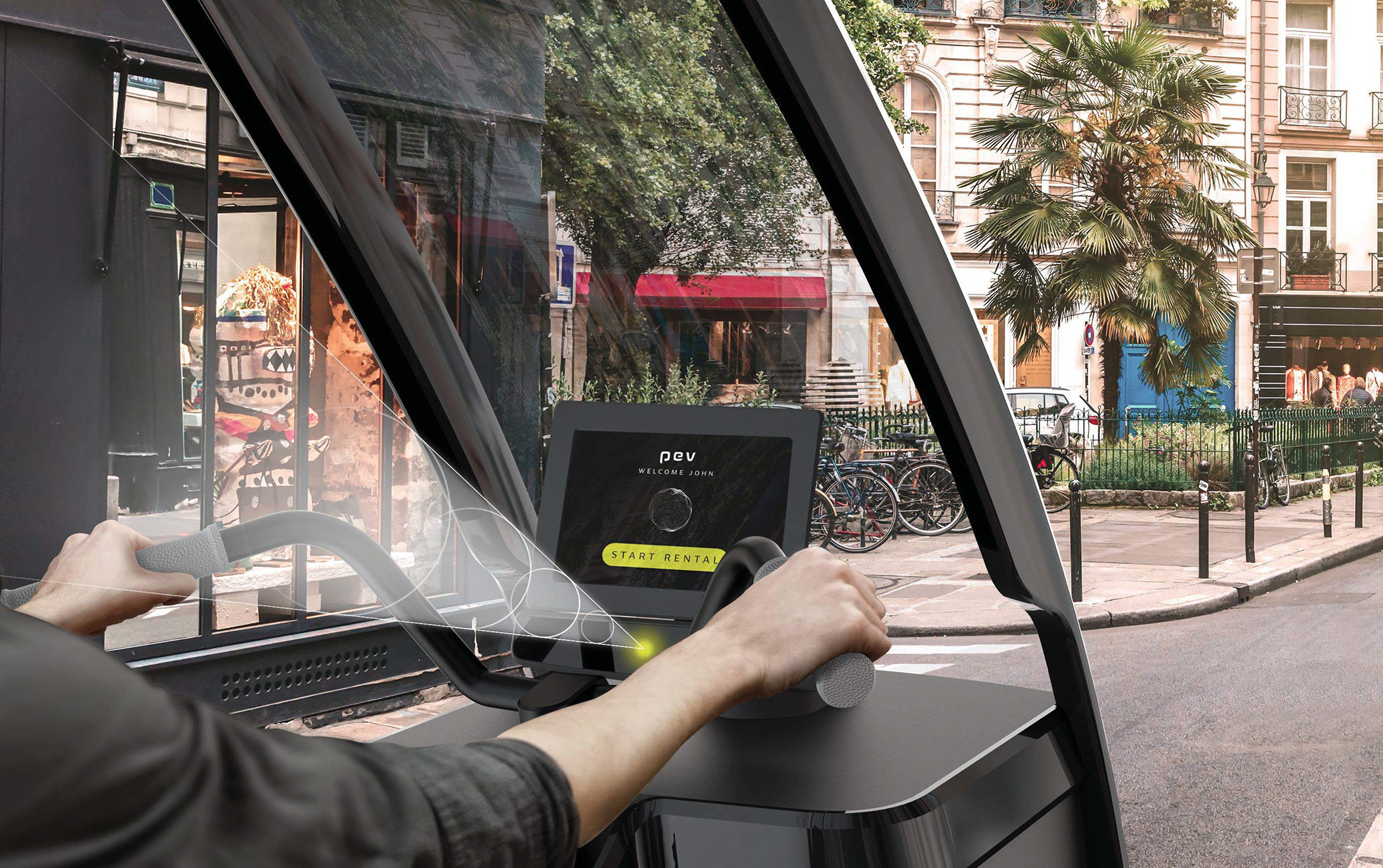
Facial recognition
The inner camera to detect if the rider is paying attention (direction of eyes and chin) to the road.
The sensors integration (LIDAR, GPS, Antenna, PCBs, battery, etc.) impacts the design of the product. I start by laying out the essential components to learn the hardware limitation and move to CAD software (Rhino, SolidWorks, AutoCAD) to iterate the design, packaging the sensors with minimum space while keeping the agility. I also used the diagram and 3D model to communicate with the fabrication company and align on design specifications.
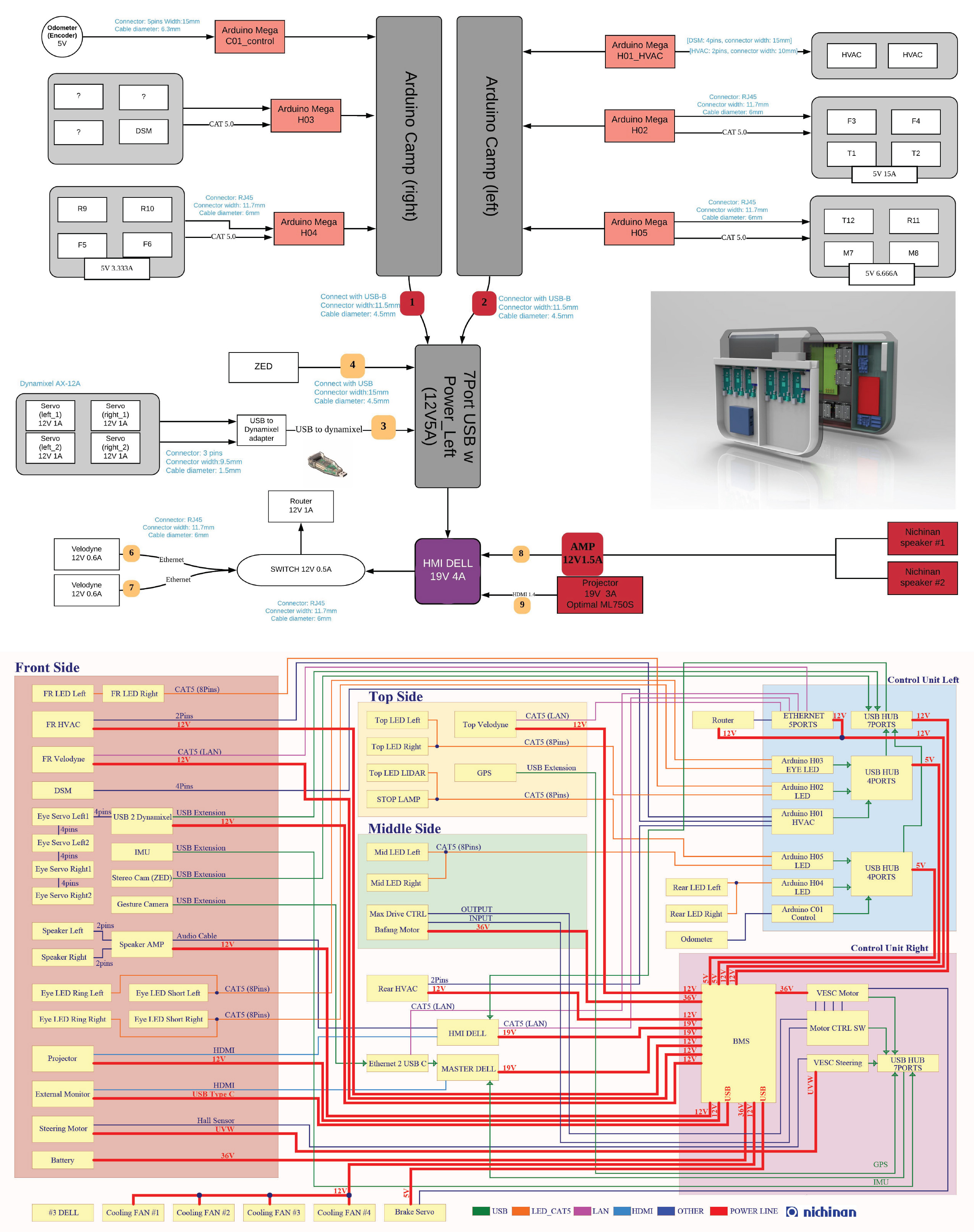
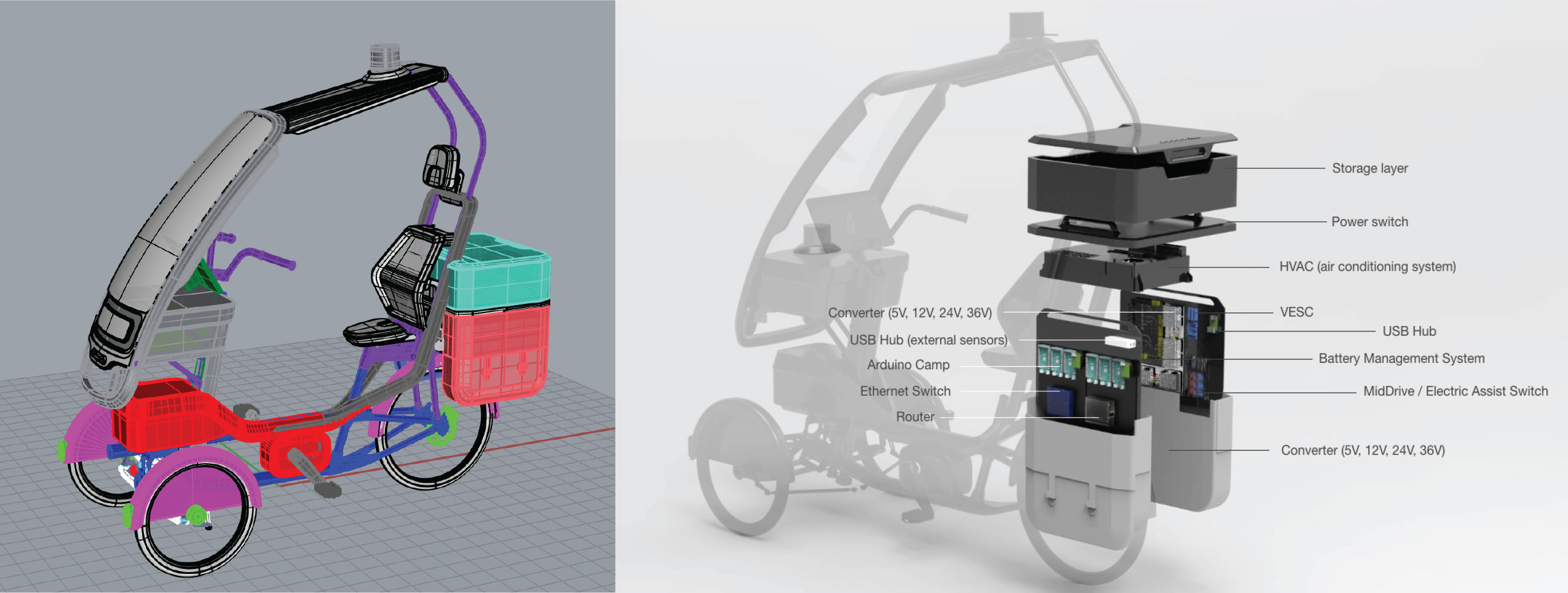
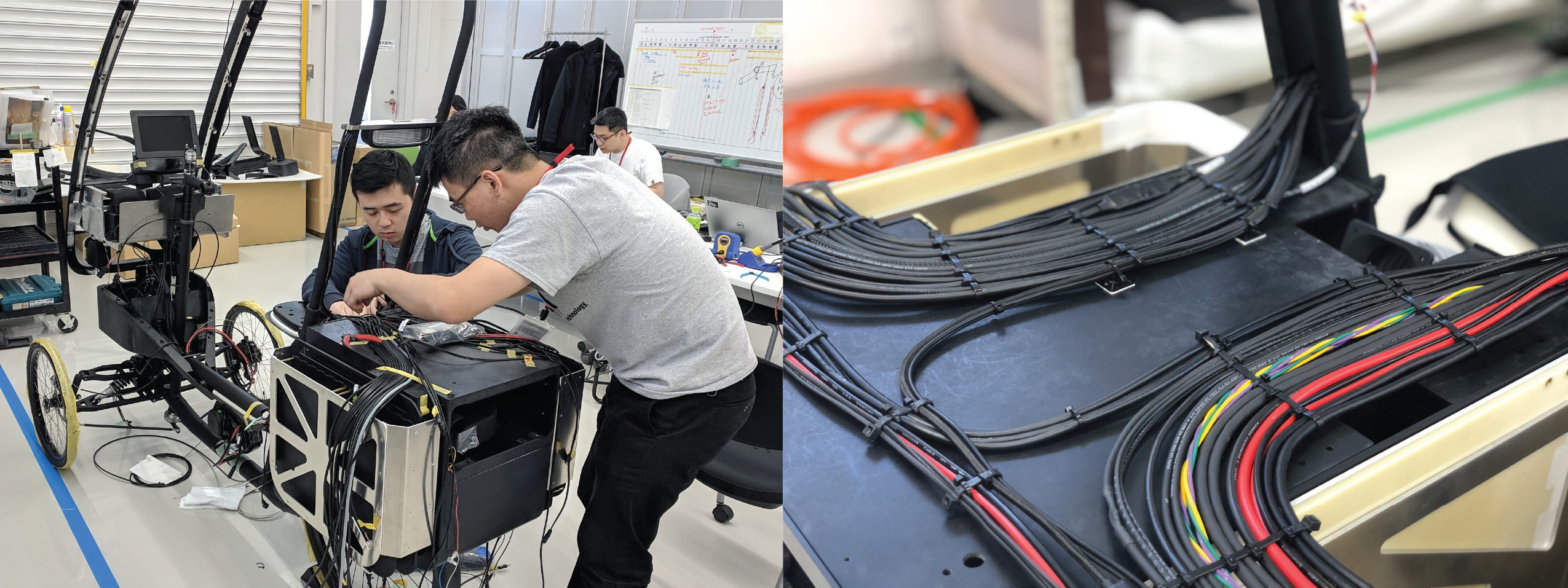
My thesis also illustrates the concerns that inhabitants of cities have about lightweight autonomous vehicles and their expectations of the new micro-mobility platform through interviews. Based on the interview results, this thesis suggests a series of interactions as potential solutions to address users’ concerns.
The HMI solutions that I proposed in my thesis are evaluated through indoor exhibitions as well as outdoor testing; Our team invited experts from automobile industries and academic research institutes to provide feedback on the interactions.
We analyzed their feedback to determine what does and does not work, thereby improving our design and ascertaining the most promising interactions. This data could potentially provide insights for other developers intending to design the next generation of micro-mobility systems for cities, helping them to build interactions that truly matter to the users.
We are still waiting for the MIT Media Lab's official press release. I will update more information here to introduce more of my thesis once the date's set!
Please stay tuned! In the meantime, feel free to take a look at the projects at the MIT Media Lab that our group works on! 😁